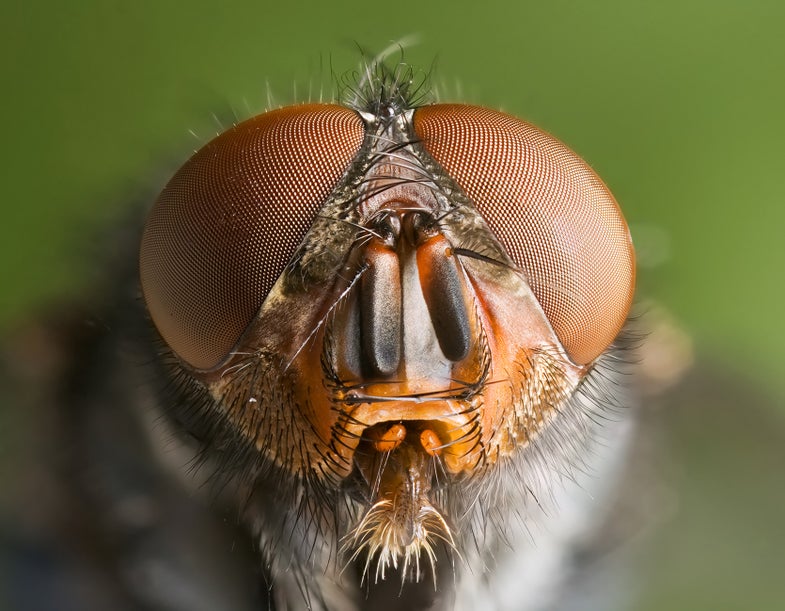Tiny Drones Can See The World Like Insects Do
Better for surveillance... and not crashing into each other

Tiny insect drones could be useful for disaster-area surveillance or delivering supplies to people in accessible places. But the technology is still new, and they run a high risk of running into each other in confined spaces. Now researchers from the Swiss Federal Institute of Technology have created an artificial eye and navigation system for these drones based on insects’ vision, according to a study published recently in The Royal Society Interface.
This isn’t the first attempt to put streamlined insect-inspired sensors into drones, but it’s the first time it’s been done for such tiny drones (others have tried to hook them up with bulky digital cameras). Insect-style vision works well for drones because it doesn’t have very high resolution, but it is highly sensitive to objects’ movement or changes in how light is reflected—perfect for maneuvering drones through small spaces with lots of obstacles.
The artificial eye the Swiss researchers designed weighs only two milligrams. It’s made of three photodetectors with a lens on top. With the combination of data from the photodetectors, which are arranged in a triangular configuration, the device can determine the speed and direction in its view, no matter if the room is poorly lit or in bright outdoor conditions. And it can do it all three times faster than real-life insects, the researchers told MIT Tech Review.
Since they have already developed the algorithms and design of the photosensor, the researchers plan to configure several artificial eyes on one drone to create a more sophisticated visual system, allowing it to take off, land, and stabilize its flying position while in the air. They also plan to develop a strip of artificial eyes into “vision tape,” a flexible patch that can be attached to any type of surface, such as other types of robots or even furniture or clothing.